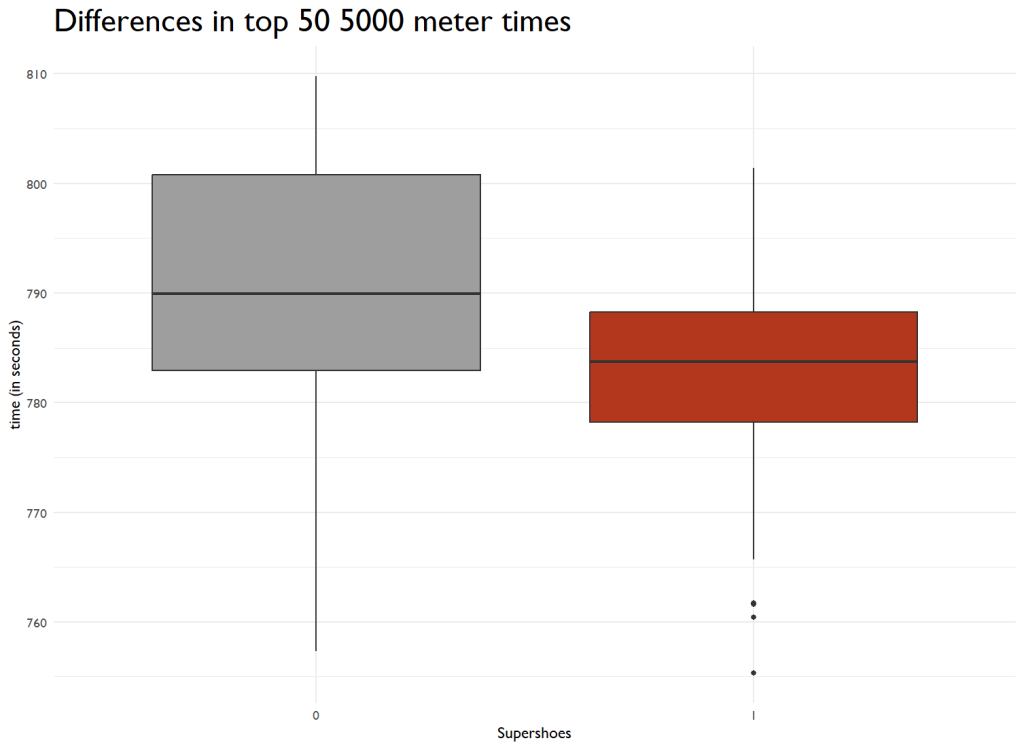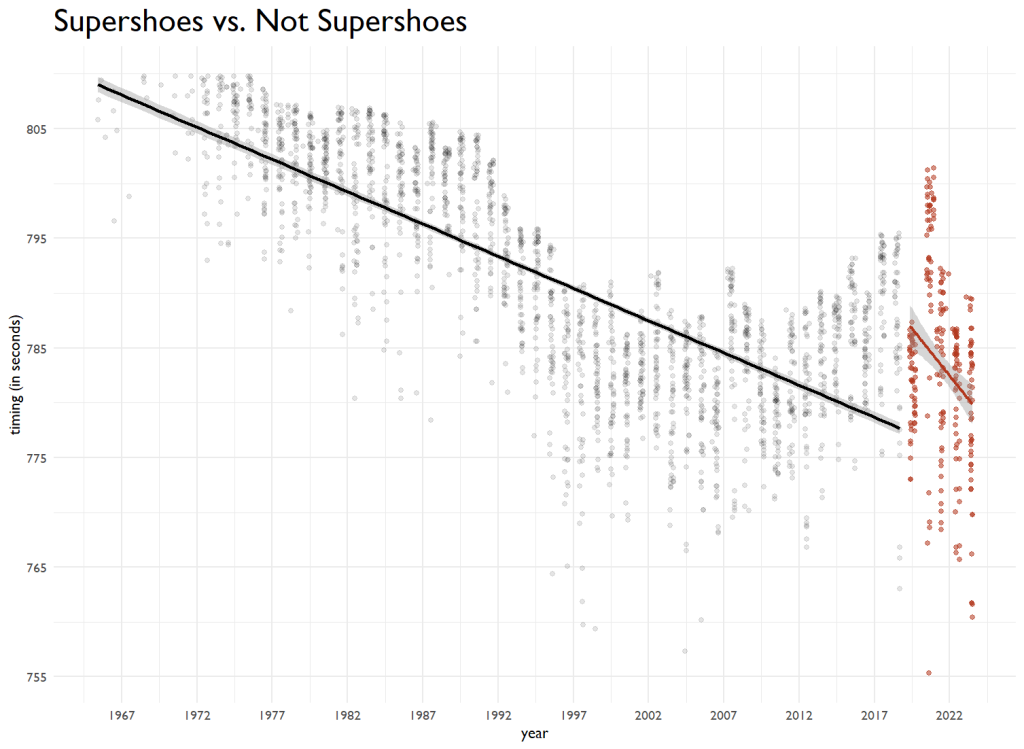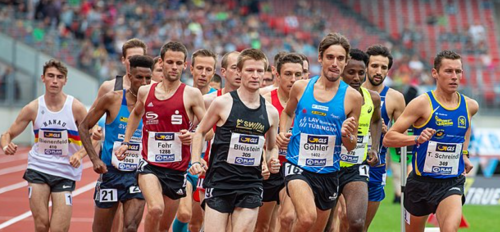Supershoes, also called super spikes or super running shoes, represent a new era of technologically advanced athletic footwear tailored explicitly for track and field events. These innovative shoes introduce various materials, features, and design elements to optimize performance and augment athletes’ speed.
The deployment of supershoes in track and field has triggered a passionate and ongoing debate within the sporting community. While these shoes undeniably provide notable performance benefits, questions have emerged regarding their potential impact on fair competition and the integrity of the sport.
In this blog post, we will delve into a specific analysis of the men’s 5000m event, exploring data and insights to gain a deeper understanding of the influence supershoes have had on this particular discipline. By examining the advantages and potential drawbacks associated with these revolutionary shoes, we can contribute to the broader conversation about the role of technology in athletic achievement and the pursuit of excellence in track and field.
What makes Supershoes faster?
Some key features found in these shoes include:
- Carbon Fiber Plates: Supershoes typically have a stiff carbon fiber plate in the midsole, which boosts energy return and propulsion. This allows athletes to generate more power with each stride.
- High Stack Height: These shoes have a thicker cushioning in the midsole, known as a higher stack height. This feature provides extra energy return and reduces strain on the legs during intense running.
- Lightweight Materials: Supershoes are made with lightweight materials to minimize the shoe’s weight. This feature helps athletes run faster by reducing the load they need to carry.
- Enhanced Midsole Foams: Advanced foams like Nike’s ZoomX or Adidas’ Boost are commonly used in supershoes. These foams provide excellent energy return and cushioning, allowing athletes to maintain higher speeds for longer durations.
- Unique Spike Plate Design: Sprint-specific supershoes often have a specially designed spike plate optimized for maximum traction and explosive power during short-distance sprints.
So, should I put these shoes on?
There are two main advantages to supershoes. First, supershoes offer undeniable performance benefits to athletes. Incorporating carbon fiber plates within the midsole helps to improve energy return and propulsion, enabling athletes to generate more power with each stride. Additionally, using advanced foam materials provides excellent cushioning and energy return, allowing athletes to maintain higher speeds for longer periods. These advantages can lead to improved times, increased endurance, and potentially better overall performance.
Second, the cushioning properties and reduced impact offered by supershoes can help mitigate the risk of injuries, especially during intense running. The high stack height and enhanced midsole foams provide additional shock absorption, reducing the strain on athletes’ legs and joints. This advantage is particularly relevant in long-distance running events where athletes endure significant repetitive impact over extended periods.
Yet, one of the primary concerns surrounding supershoes is the potential for an unfair competitive advantage. Critics argue that the advanced features of these shoes give wearers a significant edge over those who do not have access to them. This imbalance can undermine the core principles of fair play and equal opportunity that are fundamental to competitive sports.
More broadly, the rise of supershoes has raised questions about the essence of sport. Some argue that the focus should primarily be on an athlete’s skill, training, and natural abilities, rather than the technology they can afford. The increasing reliance on equipment advancements can shift the emphasis away from human capabilities, potentially altering the perception of achievements and diminishing the role of hard work and talent.
What’s the magnitude of Supershoe gains?
Continuing from my previous blog post, where I analyzed 100m times, I have applied the same methodology to examine data from the 5000-meter race. Given its longer distance, the impact of supershoes on performance may be more evident in this event.
Reviewing my earlier analysis, I realized that the data collection process caused a ceiling effect. The website I used had a cutoff score for inclusion, which was 10.3 seconds for the 100m race and 13:30 for the 5000m race. To account for this, I refined my data selection by filtering for the top 50 times per year instead of including all data. Additionally, it’s worth noting that supershoes only gained widespread usage in 2019 and onwards. To address this, I classified any times from 2019 or later as “supershoe-aided,” acknowledging that the categorization may not be entirely precise but can still offer valuable insights into emerging trends.
Now, let’s proceed to examine the boxplot! Right below, we can see the clear changes in the distribution of scores since supershoes became widespread. A simple regression analysis was conducted to quantify the effect, comparing two distinct groups: runners wearing supershoes and those without. The results reveal that wearing supershoes conferred an advantage of nearly seven seconds among the top 5000 runners. To put this into perspective, that advantage translates to approximately 40-50 meters of additional distance covered in the race.

I then plotted the top 50 times over time, and had a simple linear regression for each category. The resulting graph below is crazy. Firstly, we observe a gradual increase in times as the sporting community intensifies its efforts to combat performance-enhancing drug usage. This indicates a positive impact on the integrity of the sport and a return to fair competition. Another noteworthy trend is the accelerated improvement in times, occurring faster, coinciding with the widespread adoption of supershoes.

These findings shed light on the significance of supershoes in enhancing performance within the 5000-meter event. The data suggests that the technological advancements incorporated in these shoes contribute to significant time improvements, reshaping the competitive running landscape.
Conclusion
In conclusion, the introduction of supershoes has brought significant advancements to track and field, particularly in the men’s 5000-meter event. These technologically advanced shoes have clear advantages, including enhanced performance, reduced leg strain, and faster times. However, concerns persist regarding fairness, the shift in focus from human capabilities, and the need for appropriate regulations. Striking a balance between technological advancements and maintaining fair competition remains a challenge. Continued discussions and research are necessary to ensure the integrity of the sport while embracing the potential benefits of supershoes.
If you dare
Head over to Letsrun for the ongoing coverage of how supershoes impact performance at all levels, even high school!

